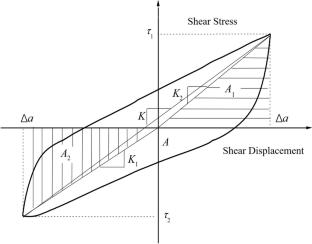To address the reduced bearing capacity of rubber-reinforced calcareous sand while also alleviating pollution from discarded tires, a combined reinforcement method using rubber and geogrid is studied. This approach utilizes the geogrid’s capability to enhance material bearing capacity through the netting effect, complementing the rubber’s reinforcement of calcareous sand. By cyclic direct shear tests, this study investigates the dynamic shear characteristics and particle fragmentation mechanism of calcareous sand reinforced with rubber and geogrid. The analysis focuses on the shear characteristics of reinforced calcareous sand and the corresponding patterns of particle crushing. The findings indicate that: (I) Geogrid reinforcement effectively restrains volume deformation in the soil induced by rubber particles. (II) Reinforcement with rubber and geogrid compensates to a certain extent for the reduction in shear stiffness attributed to the rubber mixture. (III) The relative crushing rate of unreinforced calcareous sand post-test is 25.9%, which increases to 29.8% with geogrid reinforcement, decreases to 19.1% with rubber reinforcement, and reaches 22.6% with combined rubber and geogrid reinforcement. The geogrid’s particle crushing rate disadvantage is offset by the advantage provided by rubber reinforcement. The collaboration of rubber and geogrid reinforcement effectively addresses the limitations of rubber sand as a foundation material, rendering it more suitable for practical applications.


